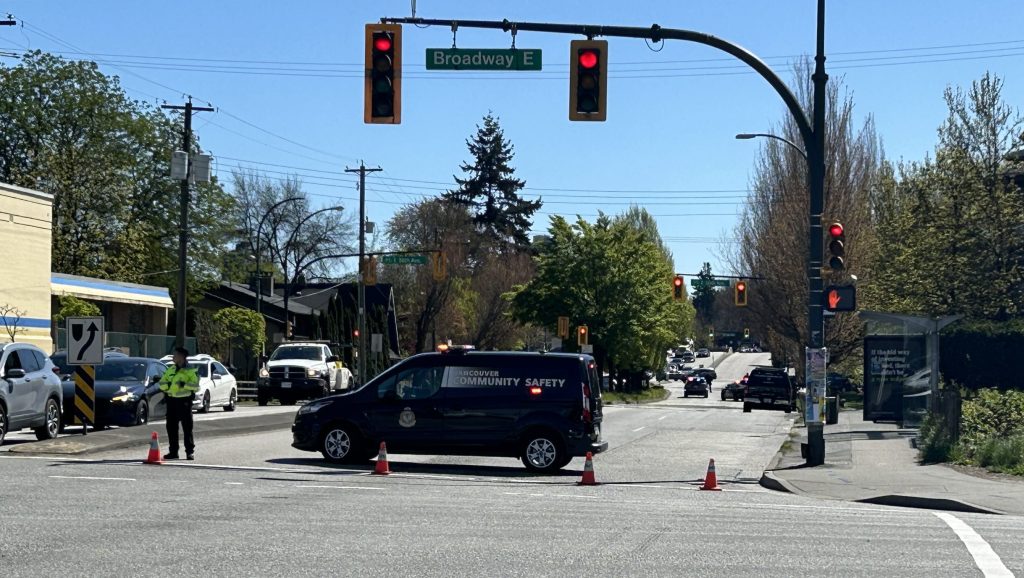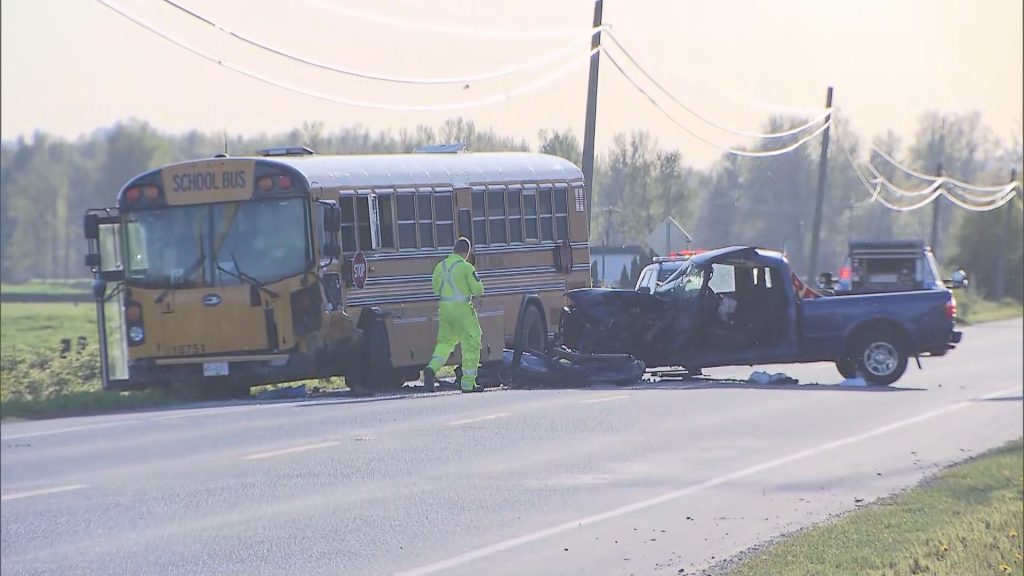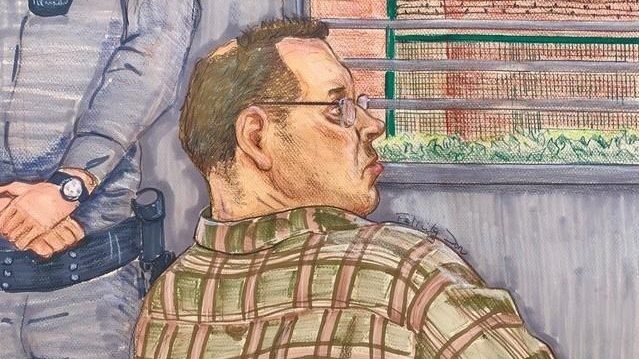‘I didn’t care who heard’: How the law fails child and youth survivors of family violence
Posted March 16, 2021 8:22 am.
Last Updated March 18, 2021 7:12 pm.
CityNews and OMNI News have launched a new investigative series “Behind Closed Doors” detailing the epidemic of family violence plaguing our communities. If you or someone you know is a victim of abuse, please visit our dedicated resource page.
WARNING: This story contains graphic content related to violence and abuse, and may be disturbing to some readers.
The names and identities of the victims in our stories have been changed to protect them.
Their stories and circumstances aren’t unique. Thousands more are being silenced as their trauma continues daily behind closed doors. These are just some of their first-hand accounts.
To watch this story in Punjabi, click here.
Growing up with someone who has a drinking problem can be a traumatic experience with lasting effects on the aggressor’s friends and family. According to Family Outreach Ontario, 660,000 Canadian children under the age of 18 live in a household with at least one alcoholic parent.
In Maya’s case, her father’s alcoholism fueled the physical and emotional abuse of her mother.
“If I knew he was drinking, I wouldn’t want to be there,” Maya said.
“[He was] drunk all the time, or gone to jail, or living with another relative. Home wasn’t a safe space. In my eyes I never really saw him as my father; I just saw him as a really angry man.”
“Why don’t you just leave?”
As Maya got older, the signs of her father’s abuse became harder to ignore.
“If he was drinking at night, me and my mom slept together, he would open the door and start yelling at my mom, screaming at my mom,” Maya said.
“[He] purposely did it in front of me.”
She said that her father used alcohol to numb his pain.
Witnessing countless violent outbursts from her father, Maya wondered why her parents continued to stay together.
It was a complicated situation for her – being related to her father meant she was not free to leave him as a spouse would, and she felt conflicted. She said she realized her mother was staying not because she wanted to, but because she didn’t have much of a choice.
“It was just so hard to see; the people who are supposed to be the loving, caring figures in your life are in so much pain.”
Pamela Cross, the legal director of Luke’s Place, said the decision making process to step out of an abusive relationship is oftentimes more complicated than we think.
“She’s very frightened. She’s extremely vulnerable because of the abuse itself. She may be a very competent woman in her life at work, or even as a parent, but within the relationship, she isn’t that empowered woman because the abuser has told her, ‘I’m in charge’.”
Victims are at greatest risk of being seriously harmed when they decide to leave, or if the abuser thinks they want to leave. Which is why it’s important that when someone decides to seek help, those supports are available and easily accessible to them.
Cross said the legal community now uses the term coercive controlling behaviours, to signify a pattern that leaves women unable to identify situations where they can control the outcomes.
“So to take that first step out of that relationship is terrifying,” Cross explains. “This isn’t about one hit or one punch or one argument where something gets thrown across the room. Intimate partner abuse is about a pattern of behavior that escalates over time that coerces the victim into behaving the way the abuser wants her to behave.”
Cross said this is also when the abuser will intensify his power over the victim, using tactics that not only instill fear, but also creates the impression that leaving won’t be easy for her. Threatening to stalk, harass and display coercive behaviours if he doesn’t get his way.
“I think a lot of people assume that once you leave a relationship, you’ve left all that bad stuff behind, but that’s not true when the other partner is abusive, especially when he’s engaging in coercive controlling behaviors, and he’s not ready to let go.”.
Trapped behind closed doors
According to 2019 police data, over 22,000 children and youth experienced family violence in Canada. A significant increase from the 19,000 reported the previous year. Three in five of those reported cases, involved young girls. This data is only representing a factor of the problem.
Maya has called police on her father before, after she witnessed him grabbing her mother by the hair and throwing her on the bed. Feeling helpless, the then-teenager and her brother wanted to protect her mother, so they called 911.
“Never once did I feel guilty about calling the police; it was more the pressure of doing it for the first time,” Maya said.
“When you’re in an unsafe environment, I didn’t care who heard (about it). Me and my brother weren’t worried about calling (for help). We were more worried about protecting our mom. We didn’t care if the neighbours could see a cop car pull up. It was our life, not theirs. It’s a mindset you have to go through. It’s not easy to do; it’s hard.”
It was the first time that the siblings had felt a slight bit of hope, that help was on the way. But that quickly diminished, after both the police and child protective services left the family home, leaving Maya feeling like her efforts were pointless.
“The cops were called and they realized there was a young child in the house. My brother was about 14 at the time, so (the Children’s Aid Society) were called. If [CAS] did more to check up on us, that would’ve been great but that was my only interaction with them. There was never a follow up, there was never anything else.”
That’s a particular area that Cross said is a challenge, kids who are in households where one parent abuses the other, are in a really difficult position.
If the abuse is reported, CAS is able to get involved. However, that’s not the case for older kids.
“There are lots of challenges with the child protection system, but it is at least an outside voice,” she said. “By the time kids are 15, 16, 17, that’s not so much of an option for them. So they’re not young enough to get help from the CAS or child protection authority. But they’re also not the direct victim of the abuse.”
Though Cross explains that it’s usually victims who make a report to police, In Canada, officers have a duty to lay charges, if they see evidence of family violence. However, that also comes with challenges.
“If they’re called to a home and they see any evidence that a domestic assault has taken place, they’re obligated to lay a charge,” she said. “The challenge is that so much violence that happens within families isn’t physical; a lot of it is emotional, psychological, verbal. There are no criminal charges for that kind of abuse.”
Maya’s father ended up going to jail three times over the course of her childhood, but she said it did little to protect her mother from his abuse – especially when his side of the family got involved and encouraged her to let him move back in with them.
“It was tough as a child; family members would come over and say, ‘oh he’s changed’,” she said.
“We knew for a fact he hadn’t, [but] we were supposed to take him back into the house. They knew what he was doing and they still pressured us to take him back. That’s why we took him back [over and over].”
How the law works as a barrier for women
Victims and survivors of domestic violence face countless barriers in trying to leave their abusers, including in the courts. According to Statistics Canada, only 12 per cent of women say they had a great deal of confidence in criminal courts.
For Cross, the lack of general understanding of how the law works is one of the biggest barriers for women, giving their abusers the opportunity to plant seeds of doubt about leaving or using controlling tactics to bring them back home.
“When I started practicing law which was quite a while ago now, I assumed family law and family court would be a haven for women leaving relationships and I quickly learned it wasn’t in many ways,” Cross said. “There’s very little recognition in the laws that relate to issues arising upon marriage breakdown or family breakdown that address the issue of violence within the family directly.”
Significant revisions have been made recently to address this issue.
Cross notes that both the Divorce Act and Ontario’s Children’s Law Reform Act saw significant revisions. Adding important identifiers of family violence, which is a vital element judges have to consider for the best interests of a child in making parenting arrangements. That means watching for signs of coercive control, psychological or financial abuse, or threats to harm animals.
“This is a huge step forward,” she said.
But the legal process itself can be a deterrent.
A huge systemic barrier is that the vast majority of women, in Ontario and the rest of Canada don’t have proper representation.
Cross said between 60 per cent to 80 per cent of women represent themselves because there’s a lack of support. Which means these women are dealing with complicated legal issues, while navigating the court system and continuing to face ongoing abuse and threats from their partner.
“The lack of adequate legal aid to ensure that even women who don’t have money to get a lawyer can get a lawyer is huge, that’s just such an enormous barrier for women,” Cross said.”
“Without having a professional, it would be like you and me trying to take out our own appendix while someone was also standing there and screaming at us that we weren’t doing it right,” Cross said. “That’s a huge systemic problem and it’s one that has to be addressed.”
Legal Aid offers a number of services to victims and survivors of domestic violence, also including providing in-court services through duty council, where staff lawyers can assist clients who are unrepresented.
Annik Wills, Director General for the Eastern District at Legal Aid Ontario, said they are working to remove barriers within their own processes, along with external stakeholders.
“We do know that the access to legal representation can go a long way,” Wills said. “Our goal is to remove those barriers and to get those victims and survivors the assistance that they need at the time that they need it, because that goes a long way in helping to ensure their safety.”
Since waiving the financial eligibility requirement for domestic abuse victims in June, Wills said they’ve been able to assist over 4,000 victims of domestic assault during the pandemic. These clients are accessing legal services that help to ensure their safety, and are also receiving assistance navigating what can be a complicated legal process.
Additionally, the publicly-funded non-profit corporation, said it significantly increased the number of lawyers available to clients, in response to the increase of violence during the pandemic.
“We’re trying to do everything we can to connect our clients to legal resources and answers to their questions as soon as possible,” Wills said. “There is certainly recognition of the danger of increased cases of domestic abuse and the courts are continuing to prioritize urgent matters, and cases involving domestic abuse are included in that.”
Shelter clients are also able to access services on an emergency basis.
But Cross said legal representation isn’t the only hurdle.
In addition to navigating a complex system, another challenge is that the court process can be lengthy, stretching years, during which the woman is vulnerable. Including in cases where a victim is facing hurdles in getting quick restraining orders or custody of the children, that can be further complicated if the abuser decides not to cooperate and make things more difficult.
That’s also when the coercive tactics can begin to escalate, as the abuser may threaten and harass the victim as the court process is underway. Factor that in with the systemic barriers that can easily overwhelm a victim, and Cross said that’s enough reason for a lot of women to return to the relationship.
“They’re not wrong, they’re thinking at least when I stay with him I’m familiar with his pattern of his abuse,” she explains. “Now that I’m engaged in this seamlessly endless process in family court, I never know where he’s going to strike next.”
Another gap in the system is that judges and lawyers need more education when it comes to domestic violence, said Cross. As the professionals who are applying and interpreting the law, they need to understand the realities of the violence that these women have to live with so that they can help craft the best possible outcomes for them.
According to Cross, many women don’t disclose that they’ve been in an abusive relationship for a variety of reasons, including fear, embarrassment, and retribution. So there needs to be a system in place which family law lawyers automatically and universally screen for family violence once the case lands on their desk.
“Lawyers need to understand that women who are walking in their offices who are perhaps disclosing family violence or perhaps not, are severely traumatized,” Cross said. “So the lawyer needs to bring a trauma informed approach.”
Living with trauma
Now an adult, Maya’s childhood continues to be a source of trauma. Though her father is now living a sober life and taking steps towards change, she’s conflicted about her feelings towards him.
“It’s been about five or six years since he got sober – after he had gone to rehab, it helped for a bit. His entire attitude and outlook on life changed,” she said.
“He realized he was going to truly lose his family. He knew the look in our eyes had changed. He already lost his relationship with my brother and was afraid of losing the chance at one with me.”
Her mother sometimes reminds her of these traumatic years, warning her to not tolerate any form of abuse from any man.
While she continues to struggle with the effects of her father’s abuse to this day, Maya hopes her story will help to dispel the taboo around leaving an abusive relationship.
“I understand how hard it is, but you’re not alone,” Maya said.
“It took a lot for us to talk about it. There needs to be more room for a dialogue about dads drinking and being abusive.”
With files from Mahnoor Yawar and Loveen Gill











